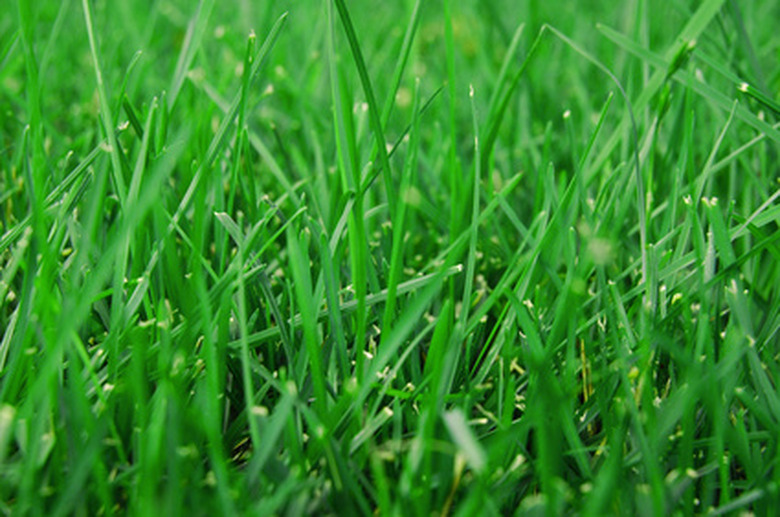Differences Between Kentucky 31 & Bluegrass
Thick, manicured carpets of fine bladed grass appeal to some, and others prefer durable, low-maintenance grass for high traffic areas. Kentucky 31 tall fescue and Kentucky Bluegrass are both well-known varieties of grass. Each has its own benefits and drawbacks which makes both types a wise choice depending on the results you want. Know your zone and determine your needs to choose the grass that will perform best for you.
Appearance
Kentucky 31 tall fescue is broad leaved, coarse and light green in color. It is known as a bunch-type grass, growing in clusters, according to Ohio State University. Kentucky Bluegrass, which is actually native to Europe, is green although some varieties do have a slight bluish cast. It is a fine-textured, soft grass with long, thin blades and grows in a carpet fashion.
Durability and Care
Kentucky 31 is tough grass that grows without excess attention and fertilization as long as it is not mowed less than 2 inches, which is too short. It grows in poor soil conditions, is drought tolerant because of its deep root systems and is not difficult to grow from seed. Bluegrass is more delicate than Kentucky 31 and needs regular watering and fertilizing. Although it is not drought tolerant, it will often go dormant and then revive once conditions become favorable again, explains Bluegrasses.com. Bluegrass is not difficult to grow from seed, but it is one of the more common shallow root sod grasses.
Preferred Use
Kentucky 31 tall fescue and Bluegrass are each suitable for certain applications. The sturdy, independent nature of Kentucky 31 makes it a good choice for playgrounds and it is also grown in fields as hay for livestock, as noted by The University of Kentucky. However, it can provide a durable, good looking lawn if it is thickly seeded. Bluegrass is naturally suited for lush lawns and low traffic areas that receive plenty of moisture and maintenance. Bluegrass is what many think of when visualizing a soft, green blanket of thick grass.
Hardiness Zones
Kentucky 31 thrives in zones 4-7. It's not suited to the extreme heat of the deep South, but it can grow toward the northern edge of zone 8 through zone 1 if tended well. Bluegrass also grows in zones 1-8, however it thrives in 2-6.
